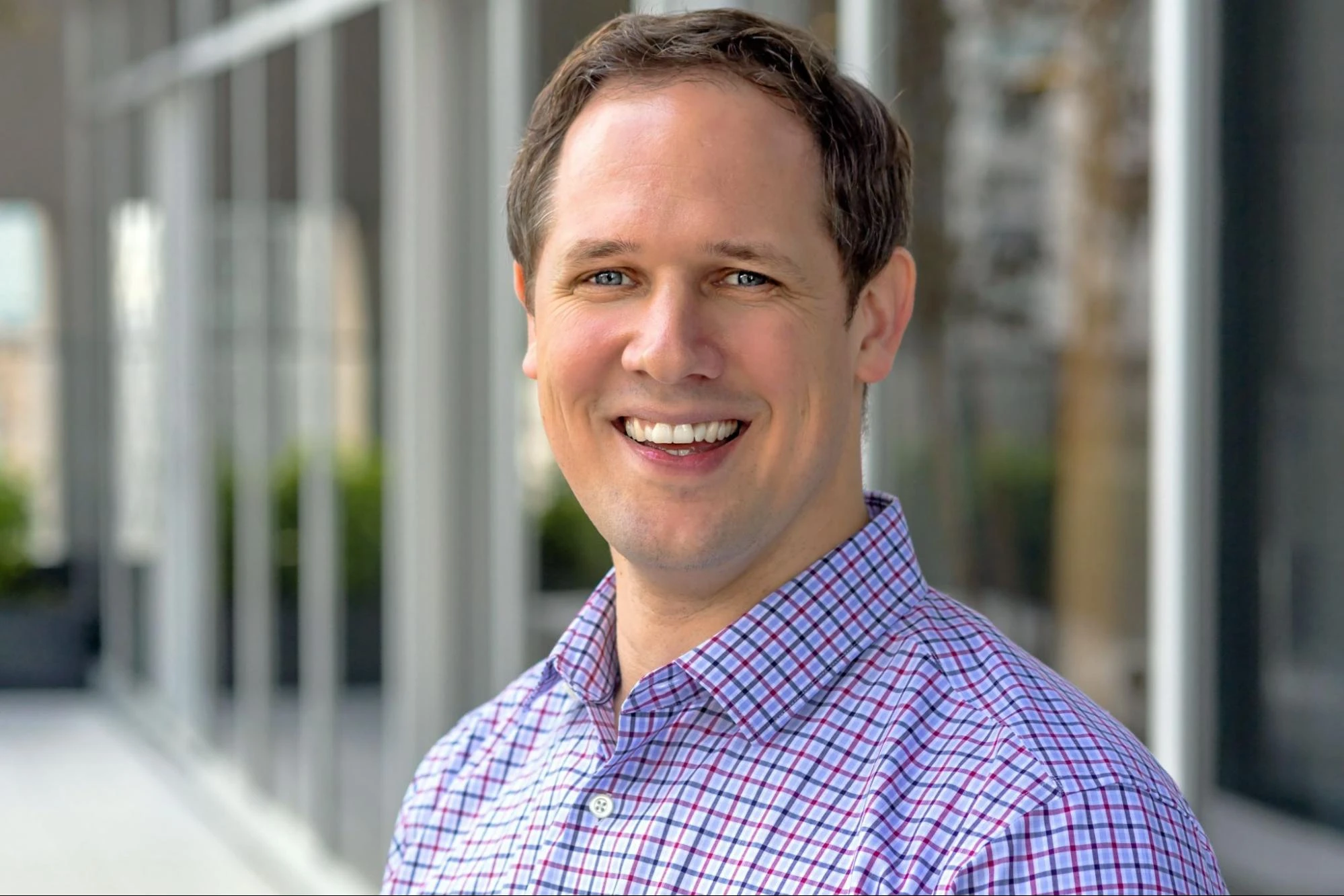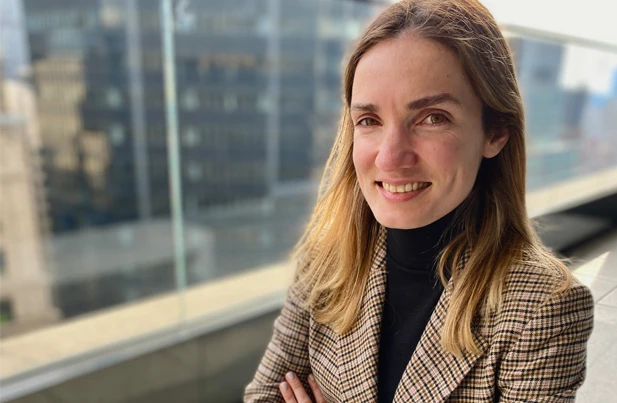Meet the Team: Enterprise Technology Engineering
January 27, 2022
Bloomberg’s Enterprise Technology Engineering group is primarily responsible for two things: data and connectivity for the enterprise. Many of Bloomberg’s enterprise clients build their own systems (such as risk systems, trading, and clearing systems), and want to feed Bloomberg’s world-class data into them to help drive their workflows. Enterprise Technology connects these clients to the services and data they need in a cost-effective way. Clients get just the information they need, exactly when and how they need it.


First, let’s meet Niraj Juthani, Manager of the Enterprise Technology Engineering group.
What are some of the unique technical challenges your team needs to tackle?
Our clients are technologists at financial institutions. They use our APIs and data and integrate with the systems they build and manage. It is very important to understand their SLAs, their workflows, and their development experience. This allows us to offer features that are conducive and easy to adopt.
At the same time, we depend on a wide variety of business groups at Bloomberg for the data they generate. We need to be able to work with them and understand many different aspects of markets and data around them. Handling data at scale while maintaining its consistency is generally a common challenge.
Briefly tell us about your career path.
I have been at Bloomberg for about 16 years. I started as an intern. I spent most of my career in News Engineering, performing many different roles. I was fortunate enough to be able to help grow the Bloomberg AI team alongside the News Engineering team. I recently moved into my current role.
After 16 years, I thought I had done many things and seen it all. But I was so wrong. This new role opened up a world that I knew existed, but never understood how different and exciting it would be. That’s the beauty of being at Bloomberg. We have all kinds of challenges and all kinds of products one can imagine.
What’s your strategy for choosing team members?
We believe in the right attitude. We want people to come in and invest themselves in what we do, own, and care about it. We look for those qualities in candidates. Core skills and domain knowledge can be improved. We are vigilant about our biases and therefore seek diverse opinions before making decisions.
What skills do you look for when hiring engineers for your teams?
As far as core skills are concerned, we have many roles with a wide variety of technology requirements. We have traditional roles which require working with C++ and Python to more modern web technologies like React, REST APIs, and GraphQL.
What are some of the factors driving the rapid growth of your group?
Our group supports enterprise businesses at Bloomberg with Enterprise Data and our Integration and Connectivity platforms. These businesses have been growing rapidly over the last few years. As the entire finance industry shifts towards data-driven decisions and focuses on improving the efficiency of operations, there is great demand for the solutions we provide. The rapid growth of this business is driving the expansion of our team.
How do you foster culture on your team? How has that changed with people working from home during the pandemic?
We depend on a highly collaborative environment. As I mentioned before, our teams work with many different groups across Bloomberg. Our success depends on how well we can build relationships, understand and define common goals, and work together. With work from home during the pandemic, we relied heavily on our pre-existing relationships and focused on innovative ways to cultivate new ones. However, with the onset of our department’s hybrid work environment, this has become a bit easier. There are enough touchpoints now to take advantage of in-person settings in the office, but still enough flexibility to work from home when one needs to. At the end of the day, it is important to foster a cordial and respectful culture where we trust each other and listen to each other to achieve success.
“We depend on a wide variety of business groups at Bloomberg for the data they generate. We need to be able to work with them and understand many different aspects of markets and data around them.”
– Niraj Juthani


Vince Mannino is a manager in Enterprise Real-time Engineering, where he is responsible for the Enterprise Entitlement and Product Oversight workflow teams. He’s working on modernizing the back-end with cutting-edge technologies and proven best practices, among other projects.
What’s the biggest challenge in your current work?
It’s definitely seamlessly upgrading the tech stack in a critical production system. It means that we have to be clever about how we transition between systems, especially with the massive amount of state and scale involved. It’s great to see how excited the team is about the potential that our new architecture unlocks. And we are already seeing the benefits in our developer experience and system stability.
What is it like moving to different teams within Bloomberg? How have you adapted?
I’ve had the opportunity to work and grow on several teams in Enterprise Technology during my four years here. What’s it like? It’s both easy and hard. It’s easy because Bloomberg always put my career first and fostered an environment where I could try new things. It’s also been challenging to go outside my comfort zone and take on new technologies and domains. Coming from a traditional C++/Java background to the Enterprise Analytics team, I still remember how mind-blowing functional programming was. However, I think that challenge is the objective. Adaptation leads to personal and professional growth, and mobility is a great way to welcome adaptation.
The best advice I was given was to embrace my position as a newcomer and not shy away from asking questions. It’s not only critical for managing the learning curve, but it’s also a key part of our culture of innovation. I can’t tell you how many times an outside perspective has helped me revisit our status quo.
How do you foster a collaborative, inclusive environment at work?
Building an atmosphere where everyone feels comfortable is critically important. When we can put forth our unique ideas and perspectives without fear of how they will be perceived, we do our best work. We innovate more too. In my view, that means maintaining a lighthearted attitude on the team. Our environment is high stakes, but we still have a lot of fun. Moreover, we strive to welcome a diverse set of opinions and strongly encourage the notion of “20% ideas.”
What are your best tips for inspiring direct reports?
I believe a lot of inspiration is bred from a place of ownership and passion. When we feel like a system is truly ours and we can see the impact of our changes, it’s easy to obsess about pushing the envelope. I still remember my first professional project. I was so passionate about perfecting it. I’d stir awake from a dream and jot newly formed feature ideas down.
We also feed off each others’ passion, especially our leaders. I like to emphasize what gets me excited — whether it’s the diversity of our technology, the scale of our products, or the company’s broad impact (including our commitment to philanthropy).
I also feel it’s important to encourage appropriate risk-taking. The team needs to be empowered to challenge the status quo, to try new things, and to fail fast. We find that a proof of concept (PoC) is an excellent way to actuate this. Bloomberg wouldn’t be here without taking the right risks.
“Bloomberg always put my career first and fostered an environment where I could try new things.”
– Vince Mannino


Samriddhi Sharma is the Team Lead for the Data Acquisitions Solutions team, which works on an API integration layer that allows key financial clients, such as big banks and hedge funds, to acquire their financial transactions from Bloomberg.
What’s the biggest challenge in your current work?
My main focus is to ensure that clients have a consistent, high-quality experience with the API. This goal drives our recent initiative to build a next-generation, scalable, and resilient product with proactive and dynamic client alerting and monitoring. The opportunity to create a roadmap and product vision that measurably improves our client experience is an exciting challenge that really drives the work I do.
What do you wish you knew about software engineering careers before you joined Bloomberg? What’s your best advice for inspiring new college grads who have recently joined Bloomberg?
In college or during internships, software engineering is often about building a proof of concept without having to worry about how the product will function in production or how it will be supported across an organization with multiple stakeholders. However, at Bloomberg, you really learn how to engineer production-ready and supportable products by solving some very complex, unique, and interesting problems.
For any new grad joining a job out of college, the best advice I can give is to start becoming comfortable with uncertainty. While your team lead will absolutely support you by providing mentorship and guidance, you’ll grow fastest if you can see uncertainty and ambiguity as an opportunity to take ownership of, and learn from, real-life problems. The uncertainty can come in multiple forms: which design pattern to implement, what technology to use, etc. Of course, you always need check-ins on your progress as you develop and grow professionally through regular feedback from your mentors.
You’re very involved in a variety of D&I initiatives. Tell us about why this is important to you and some of the things you’ve played a role in to make our workplace more inclusive.
Bloomberg does a great job at retaining its diverse employees specifically because it really invests in building an inclusive community and supporting their career growth and aspirations. As the Chair of Women in Enterprise Solutions (WES), I see my role as two-fold: building community amongst the group, and supporting members’ career aspirations by facilitating mentorship, networking, and access to the right resources. Over the past year, we’ve held mentorship speed rounds; hosted a moderated Q&A with Vlad Kliatchko, Global Head of Engineering; and organized volunteer group outings.
How do you inspire teams to innovate? What are some examples of recent innovations?
I believe innovation is a mindset that you can model and apply to your everyday work, as well as to strategic initiatives. I really encourage my team to utilize company-wide initiatives and business projects as opportunities to innovate on our current technology stack. Business and engineering initiatives don’t have to be mutually exclusive or competing interests. To that end, we have innovated on our CI/CD pipeline to collect code quality metrics (linting) and utilize these for merging new code; improved system reliability by adding support for dynamic autoscaling; and improved client and engineering monitoring experiences by adding proactive alerts to detect client issues.
“At Bloomberg, you really learn how to engineer production-ready and supportable products by solving some very complex, unique, and interesting problems.”
– Samriddhi Sharma


Richard Norton has spent 15 years at Bloomberg in a variety of roles and is currently Engineering Manager of the Data License (DL) team. The Data License platform creates a marketplace of content for Bloomberg’s clients, allowing them to access Reference, Pricing, and Regulatory Data for use in their own accounting, portfolio management, and compliance systems.
What’s the biggest challenge in your current work?
In order to maintain their edge in financial decision-making, our clients have a huge appetite for a broader range and depth of financial and alternative data. This needs to be combined with the benefits of agility from building software native to the Public Cloud. Our team has been working hard to make Data License content easily discoverable and seamlessly available in the Cloud. If they want to use our data on over 50 million securities, it’s instantly available at a click of a button for them to use in their machine learning or back-office application. This is incredibly exciting. Plus, we are fanatics about data. We care about how data is structured, its metadata, and its relationships.
How do you keep things interesting after so many years at the same company?
I’ve been fortunate to get involved across different areas of the business during my time at Bloomberg. Each role feels new, while also enabling me to leverage everything I have done so far. This includes working in different regions across New York and London, as well as different domains including Trading Solutions, Connectivity & Integration, and Data License. What all these teams have in common is a strong sense of innovation with product development ownership. It’s also been a privilege to be involved with external initiatives, such as the OpenAPI Initiative.
It looks like you’ve worked on several Bloomberg teams throughout the years. What motivated your most recent moves? What surprised you most about them?
I really loved working in my previous group, but it’s healthy to mix it up and let in fresh ideas. I spoke to my manager about new opportunities and ended up joining the Data License team. It’s an incredibly fast-growing business and I was passionate about getting closer to handling data. I was amazed by the collaboration between the team members and their willingness to make sacrifices to help each other out. This made me feel very fortunate. One team, one dream.
What is it like moving to different teams within Bloomberg? How have you adapted?
The unknown can be intimidating, but if you have 100% of the skills to be successful on day one, then you’re not challenging yourself enough to learn something new. I’ve found my managers very supportive and receptive when I’ve expressed interest in a change. When in a leadership position, you also have to give opportunities to others who are ready to step up.
How have you been able to manage your career at one company for more than a decade? What advice do you have for others who might be on a similar path?
First, building key relationships with sponsors has made a big difference. The day I interviewed to join Bloomberg, the senior interviewer made a great impression, and they have continued to be an independent source of advice and encouragement throughout my many years with the company.
Second, as an engineer, I have learned so much by partnering with my business managers. Understanding the bigger picture of what they are trying to solve empowers you to intimately understand their challenges and see where you can help.
You’re very involved in a variety of D&I initiatives. Tell us about why this is important to you and some of the things you’ve played a role in to make our workplace more inclusive.
It’s important to advocate for the right thing, not just watch from the sidelines. There are D&I initiatives happening at all levels of the organization. Initiatives that I’m involved in sponsoring include the Enterprise Technology D&I Agile Team, Data License D&I Champs, and Women in Enterprise Solutions. It’s been incredibly rewarding to see participation from so many people.
What are your best tips for inspiring direct reports?
I like to encourage my leadership team to think and manage their areas as if it’s their own business. When things go well, pass on recognition to others, and when they don’t, take ownership of failures and learn from them. If you believe strongly in something, disprove others who tell you why it can’t be done.
How do you inspire teams to innovate?
Giving the team confidence in trying new things. Every quarter we dedicate a development sprint for whatever the engineer wants to work on. This could be a solo or group project, learning a new technology, an idea for a business feature, or enhancing an internal tool. The decision is up to them.
“As an engineer, I have learned so much by partnering with my business managers. Understanding the bigger picture of what they are trying to solve empowers you to intimately understand their challenges and see where you can help.”
– Richard Norton


Jin Yun Soo is a Software Engineer in the Enterprise Console Analytics Platform team, which is building and maintaining a real-time stream processing platform that handles enterprise data for purposes such as monitoring, analytics, and machine learning.
What’s the biggest challenge in your current work?
We have to consider aspects like high throughput, low latency, scalability, and reliability. We have been working on streaming components that are reusable for current and future use cases. For example, I was recently involved in enhancing the Apache Kafka connector in our Apache Flink platform to more effectively support time-sensitive jobs.
The team is constantly tackling new challenges. Since joining the team, I have had to iteratively learn and deliver quickly, yet thoughtfully. Some things that I find inspiring: how open source communities self-organize to shape the vision and design principles of various tools (we leverage open source tools like Kafka, Flink, etc.), the growing interest in Flink within the company, and the theories and logic that underlie fault-tolerant and stateful distributed streaming systems.
What is it like moving to different teams within Bloomberg? How have you adapted?
Within three years of joining Bloomberg, I took on two different job codes, lived in two different cities and continents, and worked on three different teams. While it sounds overwhelming, in retrospect it felt like a natural progression — one might not even realize in the moment how one thing could lead to another. Along my journey of self-discovery and challenges, I’m truly grateful to have encountered managers who vouched for me, as well as colleagues who support each other in various ways — we care for not only deliverables and technicalities, but also individual and collective growth. Through the Visiting Engineering program, I had the opportunity to collaborate with a sister team and to have hands-on experience on something new that, in turn, led to a relatively smooth transition when I transferred to that team.
Whether moving on to new opportunities or staying on the same team, it’s still all about constantly adapting and evolving in different ways. Things seem less overwhelming when we are open-minded, willing to learn and challenge assumptions, and keen to work with the people around us to build a great work environment. After all, a career is a journey, not simply a destination.
How do you foster a collaborative, inclusive environment at work?
People make culture. In turn, a positive work culture makes things better for people (i.e., employees of the company). I have observed a few traits in others that make them great to work with: empathy, willingness to listen and share, and paying it forward in various ways. Seemingly small things can trigger a domino effect that maintains a positive dynamic: informal chats to share experiences, introducing people who might benefit from and/or contribute specific insights to one another, and a safe space for people to share ideas and opinions constructively.
The Enterprise Technology D&I initiative provides an opportunity for individual contributors and managers alike to closely work together on pertinent matters as part of quarterly rotations. Engineers can play a part in shaping the course of the initiative, determining its priorities, laying the groundwork, etc. Through my involvement in the Advisory team and the Q1 Agile team, I had the chance to get to know colleagues I hadn’t worked with before. Through the monthly Office Hours, we hope to learn about various perspectives through conversations that develop organically.
In general, I think it is important to work together to build a workplace that not only creates opportunities for everyone, but also has a culture that empowers everyone to be innovative and grow professionally.
“It is important to work together to build a workplace that not only creates opportunities for everyone, but also has a culture that empowers everyone to be innovative and grow professionally.”
– Jin Yun Soo


Kateryna Voievoda is the Engineering Team Lead for the Enterprise Metering Business Engine. She’s working on consolidating real-time and data license metering systems, specifically moving the Desktop API (DAPI) calculation over to the DL metering platform.
What inspires you about your current work?
I’m inspired by the complexity of this project. When you have two independent, mature production systems that have their reasoning and paradigms, coming up with a way to consolidate them into a single system is not an easy task.
What do you feel is an advantage to hiring more people with career experience outside of software engineering and financial analysis?
I don’t have a formal engineering degree. In my personal experience, the fact that someone has dozens of algorithms memorized does not necessarily translate into them being a good software engineer. I think it is important to remember that there are a lot of people out there who didn’t have the opportunity to go to specific schools or do internships, but are nevertheless talented, smart, eager to learn, and bring their unique way of looking at problems and solving them. I think you rob yourself and your organization of success by dismissing this talent based solely on titles or diplomas.
What advice do you have for people from underrepresented groups who are pursuing a career in tech?
My advice is don’t doubt yourself. There will certainly be people who feel threatened or uncomfortable by your presence, and they might try to use their experience, status, or public opinion about them to dismiss you. In these moments, it is easy to start doubting yourself. But, I encourage you to remember that you are where you are because of your intelligence, hard work, and willingness to take action and create change. Your voice is important. Your opinions are important. And you matter.
What are your best tips for inspiring direct reports?
The best way to inspire your direct reports is by leading by example. As a leader, it is important for me to show up for people, and to make sure I’m there with my sleeves rolled up, ready to jump in the trenches when the team needs me.
Another important thing for me to show is that I’m not a robot, that I also make mistakes and can be wrong, and that I’m comfortable admitting those mistakes and listening to every opinion.
“Don’t doubt yourself… remember that you are where you are because of your intelligence, hard work, and willingness to take action and create change. Your voice is important. Your opinions are important. And you matter.”
– Kateryna Voievoda
Check out some open roles with our Enterprise Technology Engineering team